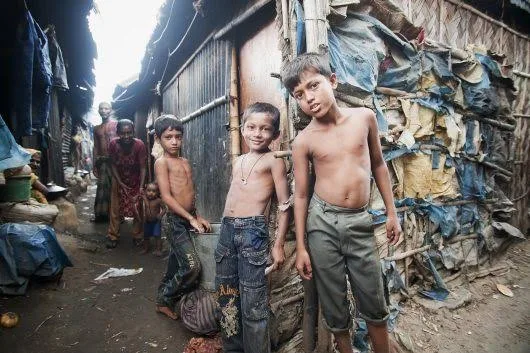July 2, 2025 –
The Global Poverty Report 2025 has been released, shedding light on the ongoing struggle against poverty worldwide. According to the report, an estimated 659 million individuals live in extreme poverty, defined as living on less than $2.15 per day.
Global Poverty Remains Alarming.
A staggering 659 million people worldwide are living in extreme poverty, according to the latest Global Poverty Report. The report highlights systemic issues such as income disparity and ineffective governance as major contributors to the problem.
Poverty rates remain high in certain regions, particularly in Sub-Saharan Africa, where about 40% of the population lives in extreme poverty. South Asia has made progress in reducing poverty, but still accounts for a significant portion of the world’s poor.
Experts stress the need for policies that benefit the most vulnerable, such as social protection programs and investments in education and healthcare. They also emphasize the importance of inclusive economic growth and better governance to reduce poverty.
The report’s findings serve as a reminder of the ongoing struggle against poverty and the need for sustained efforts to address this complex issue.

Key Findings
The report highlights several key findings, including:
- Persistent poverty: Despite progress in reducing poverty rates in some regions, many countries continue to struggle with high poverty rates.
- Income disparity: The report notes that income inequality remains a significant obstacle to poverty reduction, with the wealthiest 10% of the population in many countries holding a disproportionate share of national income.
- Ineffective governance: Weak institutions, corruption, and lack of transparency are identified as major contributors to poverty, as they hinder the effective implementation of poverty reduction policies.
Regional Trends
The report highlights regional trends, including:
- Sub-Saharan Africa: The region continues to face significant poverty challenges, with an estimated 40% of the population living in extreme poverty.
- South Asia: Progress has been made in reducing poverty rates, but the region still accounts for a large share of the world’s poor.
Recommendations
To address poverty, the report recommends:
- Pro-poor policies: Governments should implement policies that support the most vulnerable populations, such as social protection programs and investments in education and healthcare.
- Inclusive economic growth: Encouraging economic growth that benefits all segments of society, rather than just the wealthy few, is crucial to reducing poverty.
- Improved governance: Strengthening institutions, increasing transparency, and reducing corruption are essential for effective poverty reduction.
Conclusion
The Global Poverty Report 2025 underscores the need for sustained efforts to address poverty worldwide. By understanding the root causes of poverty and implementing effective policies, governments and international organizations can work towards reducing poverty and improving the lives of millions of people around the world.
